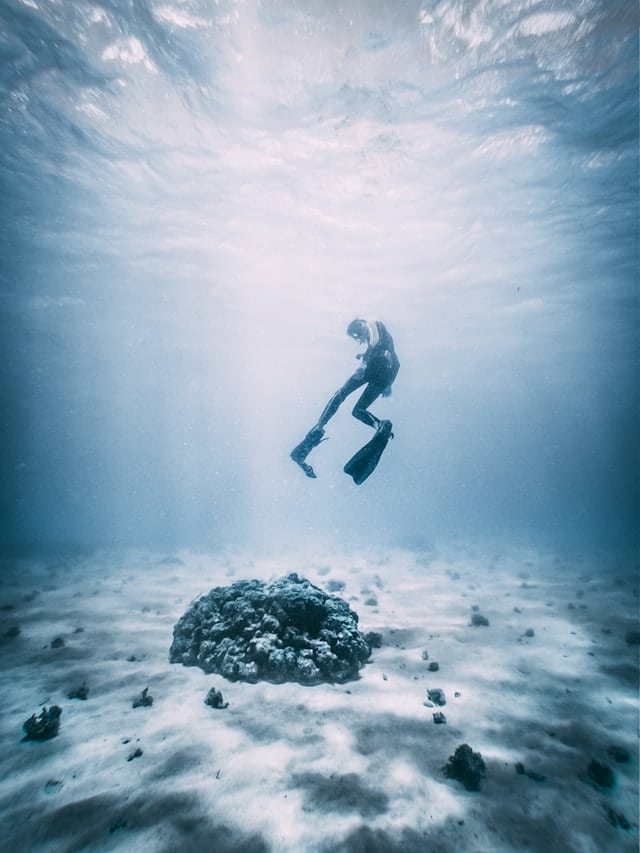Imagine a world beneath the sea, a world that is so vast and so deep that it dwarfs the tallest mountains on the surface of the earth. Now, imagine exploring this world, not with a submarine or a scuba diving kit, but with a robot. Yes, a robot that can go where humans cannot, withstand pressure that humans cannot, and stay underwater for lengths of time that humans cannot. This is not a scene from a science fiction movie, but a reality made possible through the rapidly developing field of underwater robotics.
The rise of autonomous underwater vehicles (AUVs)
Autonomous underwater vehicles, or AUVs, are a critical part of this new frontier of underwater exploration. These robots are equipped with a variety of sensors and instruments to collect data from the ocean depths. They can operate in challenging environments where human divers cannot go, dive deeper, stay submerged longer, and cover more territory. But what makes them truly remarkable is their autonomy.
En parallèle : Can Smart Glasses with Real-Time Translation Features Break Language Barriers Globally?
AUVs are not controlled by a human operator from the surface. Instead, they rely on advanced algorithms and machine learning techniques to navigate the underwater environment, avoid obstacles, and carry out their mission. This autonomy allows them to perform complex tasks, such as tracking marine life, mapping the seafloor, or inspecting underwater infrastructure, without human intervention.
The use of autonomous robots for underwater exploration has the potential to revolutionize our understanding of the ocean. For example, by using AUVs to collect data on deep-sea ecosystems, scientists can gain new insights into the rich biodiversity that exists in the ocean depths, many aspects of which remain a mystery.
En parallèle : How Is AI Being Used to Optimize the Recycling Process of Electronic Waste?
The future of marine exploration
The future of marine exploration is closely tied to the development of new technologies. With the advent of advanced robotics, we are now able to explore regions of the ocean that were previously inaccessible. Robots possess the ability to withstand the extreme conditions of the deep sea, including high pressures, low temperatures, and total darkness.
These advancements are not only opening up new frontiers for exploration but also for conservation. With the help of robots, researchers can keep a closer eye on marine ecosystems, monitor their health, and take action to protect them.
Moreover, robots can also be used to carry out tasks that are too dangerous for humans. For instance, they can be used to clean up oil spills, collect samples from toxic environments, or carry out maintenance work on underwater structures.
Developing more effective underwater robotic systems
While the use of underwater robots has led to significant advancements in marine exploration and conservation, there is still much work to be done. While current robot technology has opened up new opportunities for underwater exploration, there are still limitations that need to be addressed to make these systems more effective and efficient.
One of these challenges is energy efficiency. Underwater robots need to carry their own power sources, which can limit their operating time and range. Furthermore, the challenging conditions of the deep sea can also impact the durability and reliability of these systems.
Another challenge is data collection and analysis. While robots can collect a wealth of data, processing and interpreting this data can be a complex task. Researchers are working on developing more sophisticated data analysis tools and algorithms to help make sense of the information collected by these robots.
Robotics and the conservation of marine life
The ocean is home to an astonishing array of life, much of which is still unknown to science. As humans continue to explore the ocean’s depths, it’s critical to ensure that we do so in a way that minimizes our impact on these delicate ecosystems. This is where underwater robotics can play a key role.
Robots can be used to monitor marine ecosystems, collect data on marine life, and even help protect endangered species. For instance, robots can track the movements of marine animals, observe their behavior, and collect data on their habitats. This information can be used to develop conservation strategies, inform policy decisions, and raise awareness about the threats facing our oceans.
In conclusion, while we still have much to learn about our oceans, the use of advanced robotics is helping us to uncover their secrets in a way that is both efficient and sustainable. As technology continues to evolve, we can expect to see even more impressive advances in the field of underwater exploration and conservation.
The Role of Artificial Intelligence in Advancing Underwater Robotics
Artificial intelligence (AI) has been instrumental in transforming the capabilities of underwater robots in the deep sea, making these autonomous underwater vehicles (AUVs) more efficient and effective. AI is the driving force behind their ability to navigate the deep sea, avoid obstacles, and execute complex tasks independently.
These robots are designed with sophisticated AI systems that allow them to process real-time data, make decisions, and adapt to their environment. For instance, if an underwater robot encounters an obstacle, its AI system can analyze the situation, decide the best course of action, and steer the robot accordingly. This level of autonomy is especially critical in the deep sea, where conditions can be unpredictable and human intervention is not possible.
Moreover, AI has also improved the data collection capabilities of underwater robots. With AI, robots can recognize and classify different types of marine life, map the ocean floor with greater precision, and detect changes in the marine environment related to climate change. This data is invaluable for scientists and researchers, who can use it to expand our understanding of the deep sea and inform conservation efforts.
Despite these advancements, integrating AI into underwater robots is not without its challenges. These include developing AI systems that can function reliably in the harsh conditions of the deep sea and ensuring that robots can operate autonomously for extended periods without the need for human intervention. However, with continued research and innovation, these challenges can be overcome.
Remotely Operated Vehicles: Complementing Autonomous Underwater Robots
While AUVs offer incredible opportunities for deep-sea exploration, they are not the only type of underwater robot making waves in this field. Remotely operated vehicles or ROVs, controlled by a human operator from the surface, also play a crucial role in ocean exploration and conservation.
ROVs have a distinct advantage in situations where human decision-making is critical, like archeological digs or complex repair tasks on underwater structures. They are typically tethered to a ship and controlled in real time, which allows for immediate data interpretation and decision-making.
Another benefit of ROVs is that they can operate indefinitely, as long as the ship to which they are connected remains on station. This contrasts with AUVs, which have a finite battery life. ROVs also have the advantage of being able to carry a larger payload than AUVs, making them suitable for tasks like sample retrieval or deployment of scientific equipment.
In conclusion, both autonomous and remotely operated underwater robots are crucial for deep-sea exploration and conservation. Their unique capabilities complement each other, allowing us to explore and understand the ocean’s depths more thoroughly and sustainably than ever before. As technology continues to evolve, we can expect even more significant advancements in the field of underwater robotics, further revolutionizing our understanding of the marine world.











